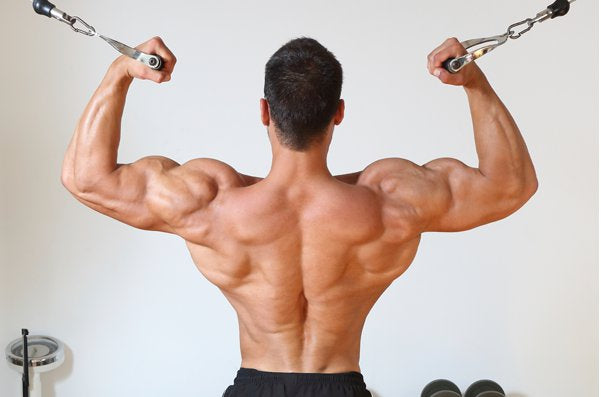Achieving rapid weight loss involves more than just shedding pounds, it's about sculpting a healthier, leaner physique. In this comprehensive guide, we'll explore exercises that not only contribute to significant weight loss but also help shape and tone your body. Understanding the science behind these exercises and incorporating them into a well-rounded fitness routine will set you on the path to achieving your weight loss goals.
The Science Behind Rapid Weight Loss
Before delving into the exercises, it's crucial to understand the scientific principles that drive effective weight loss.
Caloric Deficit
To lose weight, you must create a caloric deficit—burning more calories than you consume. This can be achieved through a combination of dietary changes and increased physical activity.
Metabolic Boost
Certain exercises, particularly high-intensity ones, elevate your metabolism not only during the workout but also in the hours that follow. This post-exercise calorie burn contributes significantly to weight loss.
Muscle Engagement
Building and maintaining lean muscle mass is key to an efficient metabolism. Exercises that engage multiple muscle groups simultaneously promote muscle development and, consequently, weight loss.
Effective Exercises for Rapid Weight Loss
Effective exercises for rapid weight loss involve a mix of high-intensity workouts and strength training. High-Intensity Interval Training (HIIT) maximises calorie burn and boosts metabolism. Compound strength training engages multiple muscle groups, promoting lean muscle development. Kettlebell workouts add dynamism and elevate heart rate for efficient fat burning. Cardiovascular exercises contribute to calorie expenditure and cardiovascular health. Core-strengthening workouts enhance stability and tone muscles. Integrating these exercises into a balanced fitness routine, alongside proper nutrition and recovery, can accelerate weight loss and improve overall health. Always consult with fitness professionals to tailor exercises to individual fitness levels and health conditions.
1. High-Intensity Interval Training (HIIT)
High-Intensity Interval Training (HIIT) is a dynamic exercise method involving short bursts of intense activity followed by rest. Known for its efficiency, HIIT maximises calorie burn, improves cardiovascular fitness, and creates a sustained afterburn effect for continued calorie expenditure post-workout. Adaptability to different fitness levels makes HIIT a popular and effective choice for time-efficient workouts.Following are popular HIIT workouts:
Sprints
How to do Sprints
- Find an open space or use a treadmill.
- Sprint at maximum effort for 20-30 seconds.
- Follow with a 30-40 second slow jog or walk.
- Repeat the cycle for 15-30 minutes.

Benefits
- Maximises calorie burn in a short time.
- Elevates metabolic rate for extended fat burning.
- Improves cardiovascular fitness.
Jumping Jacks
How to do Jumping Jacks
- Stand with feet together and arms at your sides.
- Jump while spreading your arms and legs.
- Land softly and return to the starting position.
- Perform at maximum intensity for 20-30 seconds.

Benefits
- Full-body workout, engaging multiple muscle groups.
- Raises heart rate, promoting calorie burn.
- Enhances coordination and cardiovascular endurance.
Burpees
How to do Burpees
- Start in a standing position.
- Drop into a squat position and place your hands on the ground.
- Jump your feet back into a plank position.
- Perform a push-up, then jump your feet back to squat position.
- Explosively jump up from the squat position.

Benefits
- Combines strength and cardio in one exercise.
- Burns calories effectively and boosts metabolism.
- Targets multiple muscle groups for overall fitness.
2. Compound Strength Training
Compound strength training involves exercises that engage multiple muscle groups simultaneously, such as squats and deadlifts. This method promotes lean muscle development, increases overall calorie burn, and contributes to post-exercise metabolic elevation. Lets dive into the most popular strength trainings:
Squats
How to do Squats
- Stand with feet shoulder-width apart.
- Lower your body by bending your knees and hips.
- Keep your back straight and chest up.
- Lower until your thighs are parallel to the ground.
- Return to the starting position.

Benefits
- Engages multiple muscle groups, including quads, hamstrings, and glutes.
- Promotes overall lower body strength and development.
- Enhances functional movement and daily activities.
Deadlifts
How to do Deadlifts
- Stand with feet hip-width apart, holding a barbell.
- Hinge at the hips, keeping the back straight.
- Lower the barbell towards the ground.
- Keep the barbell close to your body.
- Return to the starting position.

Benefits
- Targets the posterior chain, including hamstrings and lower back.
- Builds overall strength, particularly in the back and hips.
- Enhances core stability and grip strength.
Bench Press
How to do Bench Press
- Lie on a flat bench, holding a barbell above your chest.
- Lower the barbell to your chest.
- Push the barbell back to the starting position.
- Keep your feet flat on the ground.

Benefits
- Focuses on the chest, triceps, and shoulders.
- Builds upper body strength and muscle mass.
- Improves pushing movements and functional upper body strength.
2. Kettlebell Workouts
Kettlebell workouts incorporate dynamic movements like swings and snatches, targeting various muscle groups. They elevate heart rate, promoting efficient fat burning, while enhancing functional strength and coordination.
Kettlebell Swings
How to do Kettlebell Swings
- Stand with feet shoulder-width apart, holding a kettlebell.
- Hinge at the hips and swing the kettlebell between your legs.
- Thrust hips forward to swing the kettlebell to chest height.
- Allow the kettlebell to swing back between your legs.
- Repeat in a fluid, controlled motion.
Benefits
- Engages the entire body, emphasising the hips and posterior chain.
- Promotes cardiovascular fitness and fat burning.
- Enhances explosive power and coordination.
Turkish Get-Ups
How to do Turkish Get-Ups
- Lie on your back with a kettlebell in one hand.
- Follow a sequence of movements to stand up.
- Reverse the sequence to return to the starting position.
- Switch hands and repeat the process.
Benefits
- Targets multiple muscle groups, including shoulders and core.
- Improves stability, mobility, and overall body awareness.
- Enhances functional strength and coordination.
Kettlebell Snatches
How to do Kettlebell Snatches
- Start with a kettlebell between your legs.
- Swing the kettlebell back and explosively bring it overhead.
- Lock out your arm at the top.
- Lower the kettlebell back down in a controlled motion.
- Repeat with the opposite arm.
Benefits
- Enhances overall stability and posture.
- Tones and strengthens core muscles.
- Supports better performance in other exercises.
Cardiovascular Exercises
Cardiovascular exercises, including running and cycling, contribute to calorie expenditure and improve cardiovascular health. These workouts provide diverse options for varying fitness levels and consistently burn calories.
Running
How to do Running
- Choose a comfortable pace and suitable terrain.
- Run for at least 20-30 minutes.
- Adjust intensity based on fitness level.
- Use proper footwear and maintain good form.

Benefits
- Improves cardiovascular health.
- Burns calories effectively with consistent performance.
- Enhances endurance and stamina.
Cycling
How to do Cycling
- Use a stationary bike or cycle outdoors.
- Maintain a steady pace or incorporate interval training.
- Aim for at least 150 minutes per week.
- Adjust resistance based on fitness level.

Benefits
- Provides a low-impact cardiovascular workout.
- Builds leg strength and endurance.
- Improves overall cardiovascular fitness.
Jump Rope
How to do Jump Rope
- Choose a quality jump rope with proper length.
- Jump continuously for 10-15 minutes.
- Increase intensity with variations like double unders.
- Incorporate into HIIT routines for added benefits.

Benefits
- Burns calories effectively and promotes weight loss.
- Improves cardiovascular health and coordination.
- Portable and convenient for at-home or on-the-go workouts.
Core-Strengthening Workouts
Core-strengthening workouts, such as planks and leg raises, enhance overall stability and posture while toning core muscles. They support better performance in other exercises and contribute to overall body strength.
Planks
How to do Planks
- Begin in a push-up position with forearms on the ground.
- Maintain a straight line from head to heels.
- Hold the position for 30 seconds to a minute.
- Engage the core throughout.

Benefits
- Enhances overall stability and posture.
- Tones and strengthens core muscles.
- Supports better performance in other exercises.
Russian Twists
How to do Russian Twists
- Sit on the ground with knees bent and feet flat.
- Lean back slightly and engage the core.
- Rotate the torso, touching the ground beside you.
- Repeat the movement from side to side.

Benefits
- Targets the obliques and strengthens the core.
- Improves rotational strength and stability.
- Enhances overall core definition.
Leg Raises
How to do Leg Raises
- Lie on your back with legs straight.
- Lift your legs toward the ceiling.
- Lower your legs back to the starting position.
- Keep the movement controlled and engage the core.

Benefits
- Concentrates on the lower abs and hip flexors.
- Enhances lower ab strength and overall core stability.
- Can be adapted for different fitness levels.
Nutrition for Effective Weight Loss and Recovery
Caloric Deficit and Balanced Diet
Achieving rapid weight loss necessitates a caloric deficit—burning more calories than you consume. Combine these exercises with a balanced diet to support your journey.
Key Points
- Maintain a caloric deficit for weight loss.
- Include a balance of macronutrients: proteins, carbohydrates, and fats.
- Protein-Rich Foods for Muscle Recovery
- Building and maintaining lean muscle mass is vital for an efficient metabolism. Integrate protein-rich foods to support muscle recovery after intense workouts.
Recommended Foods
- Lean meats (chicken, turkey, fish).
- Plant-based proteins (tofu, lentils, beans).
- Dairy or dairy alternatives.
- Hydration for Performance and Recovery
- Proper hydration is crucial for optimal performance and recovery. Ensure you stay hydrated throughout the day, with special attention before, during, and after workouts.
Benefits of Hydration
- Supports digestion and nutrient absorption.
- Promotes optimal blood flow for muscle function.
- Aids in energy levels during workouts.
- Supplements for Enhanced Performance
Consider incorporating supplements to enhance your workout performance and recovery. Always consult a healthcare professional before adding supplements to your regimen.
Suggested Supplements
- Whey protein for muscle recovery.
- Omega-3 fatty acids for fat loss support.
- Recovery and Injury Prevention
- Incorporate recovery practices to prevent injuries and aid muscle recovery. Stretching after workouts can alleviate muscle soreness and enhance flexibility.
Tips for Recovery
- Stretch after each workout session.
- Listen to your body; rest when needed.
- Recognize signs of overtraining.
- Monitoring Progress and Adjusting
- Stay motivated by tracking your progress. Utilize visual tracking methods, maintain a workout journal, and consider using fitness apps or wearable devices.
Progress Tracking Tips
- Take before-and-after photos.
- Keep a detailed workout journal.
- Use fitness apps for monitoring performance.
- Nutrition Plans for Different Fitness Levels
- Tailor your nutrition plan based on your fitness level. Adjust portion sizes and nutrient intake to match your workout intensity and goals.
Sample Nutrition Plans
- Beginner,Focus on balanced meals with a slight caloric deficit.
- Intermediate,Increase protein intake for muscle development.
- Advanced, Fine-tune macronutrient ratios for specific goals.
Note: Individual nutritional needs may vary. Consult with a nutritionist for personalized advice.
By combining effective exercises with a balanced diet, hydration, and recovery strategies, you can optimize your weight loss journey and promote overall health and well-being. Remember to consult with fitness and nutrition professionals for personalized guidance tailored to your individual needs and goals.
Conclusion
Incorporating these scientifically supported exercises into your fitness routine can accelerate weight loss and contribute to overall health improvement. However, it's crucial to consult with fitness professionals and consider individual fitness levels and health conditions before starting a new exercise regimen.
By adopting a well-rounded approach that combines effective workouts with a balanced diet, you can embark on a sustainable journey towards rapid and healthy weight loss.










